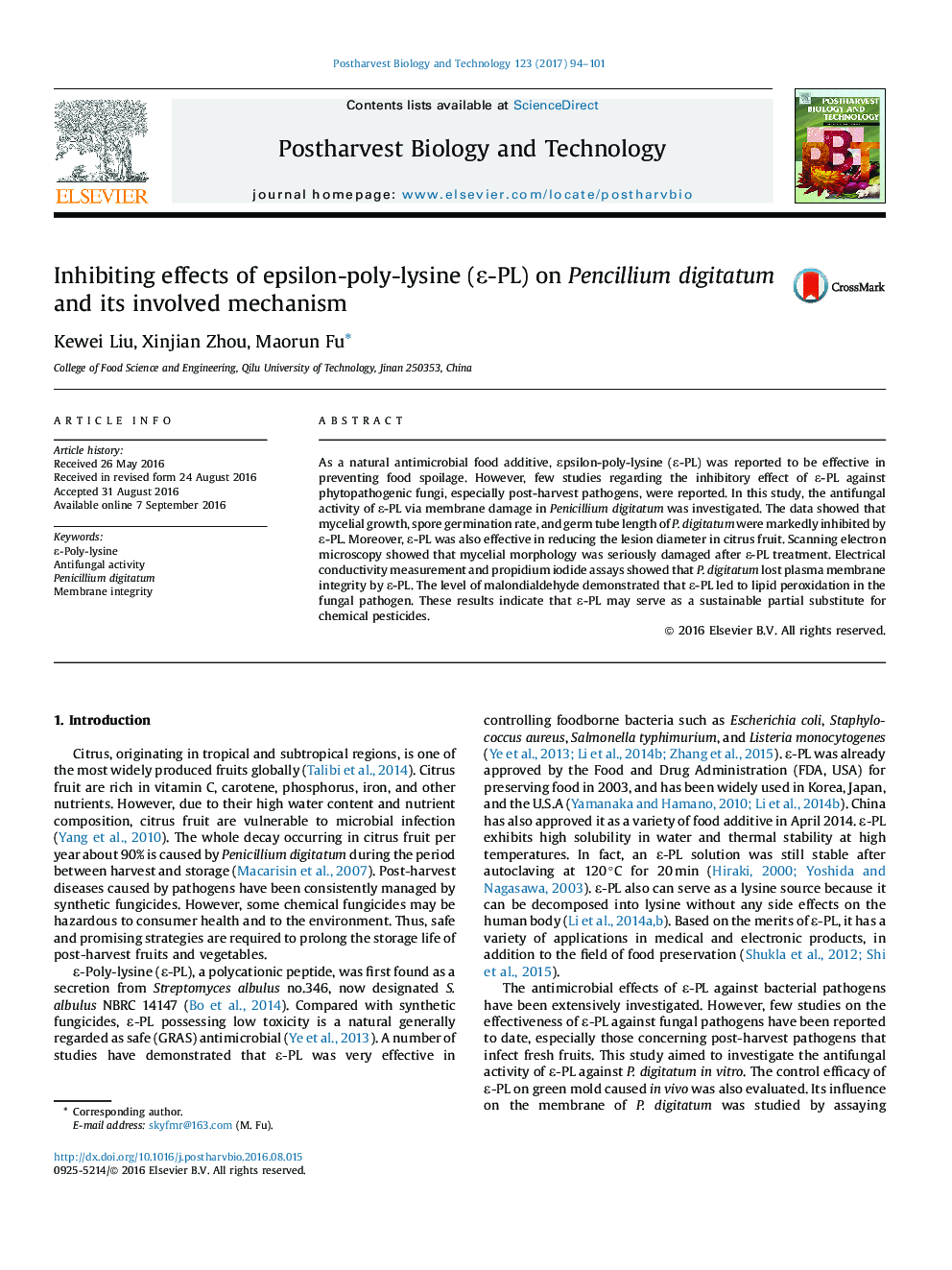| Article ID | Journal | Published Year | Pages | File Type |
|---|---|---|---|---|
| 4517676 | Postharvest Biology and Technology | 2017 | 8 Pages |
•Inhibition of fungal growth was observed after ε-Poly-lysine (ε-PL) treatment.•Scanning electron microscope showed ε-PL could destroy the morphology of mycelium.•Penicillium digitatum lost the plasma membrane integrity after ε-PL treatment.•ε-PL led to lipid peroxidation of the plasma membrane of the fungus pathogen.
As a natural antimicrobial food additive, εpsilon-poly-lysine (ε-PL) was reported to be effective in preventing food spoilage. However, few studies regarding the inhibitory effect of ε-PL against phytopathogenic fungi, especially post-harvest pathogens, were reported. In this study, the antifungal activity of ε-PL via membrane damage in Penicillium digitatum was investigated. The data showed that mycelial growth, spore germination rate, and germ tube length of P. digitatum were markedly inhibited by ε-PL. Moreover, ε-PL was also effective in reducing the lesion diameter in citrus fruit. Scanning electron microscopy showed that mycelial morphology was seriously damaged after ε-PL treatment. Electrical conductivity measurement and propidium iodide assays showed that P. digitatum lost plasma membrane integrity by ε-PL. The level of malondialdehyde demonstrated that ε-PL led to lipid peroxidation in the fungal pathogen. These results indicate that ε-PL may serve as a sustainable partial substitute for chemical pesticides.
